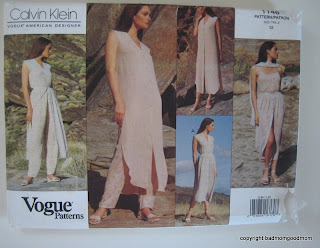So Zo asked her readers
what bullshit they had uncovered recently. I emailed that I have a whole
blog series about bullshit and that I felt a rising rant about cashmere bullshit. I promised to write this post and
cross-post it on her blog.
So why was I so upset?
Last month, I had toured the giant Macy's in Union Square (San Francisco), which contained racks and racks of cashmere. They represented a lot of goats! 20-30 years ago, cashmere was a rare luxury, not an ubiquitous gift sold for $49.
Where did they all come from? How could there be enough goats in central Asia to make so many sweaters in so many outlets?
The media was full of stories about
how to be a discerning consumer of quality cashmere or
how to avoid being fleeced by adulterated cashmere. Newspapers need to write upbeat stories that draw many readers and teach them how to consume (products from their advertisers). But fearless bloggers like Zoe
question whether this consumption is even necessary.
I was in San Francisco for the
American Geophysical Union Fall Meeting and had met Ryan Boller from NASA Goddard, who was showing an improved algorithm for the detection of aerosols from space.
The global dust belt has not received as much press as the global fashion weeks so you might not be familiar with this story. (Aerosols can be dust, clouds--both liquid water and ice, pollution, sea spray and volcanic ash). Occasionally, dust can be injected into the jet stream, a fast-moving river of air that circles the globe. Asian dust ends up in north America, American dust ends up in Europe, European dust ends up in Asia and so on.
The
Sahara desert used to be THE major source for dust, but there are other smaller seasonal sources, such as
glaciers grinding rocks in Alaska. The amount of dust is rising, and global dust season is lengthening due to both growth in dust sources (industrialization and desertification) and lengthening of local dust seasons.
In recent years, Mongolia has become a major source of dust.
The Gobi desert is spreading up into the Mongolia Steppes and the goats did it. Or rather, we did it, with our collective lust for cashmere.
Pastoralism Unraveling in Mongolia explains
Sukhtseren Sharav has a herd of 150 goats and 100 sheep, and as they chew their way through everything else, and the sharilj spreads, he must shepherd them ever higher into the mountains to find fresh grazing land.
The lack of foraging terrain is not Mr. Sharav’s only worry. The price for cashmere, the wool made from the fleece of his goats, has plunged 50 percent from last year. The price of flour, his most essential food staple, has more doubled.
These are hard times for Mongolia’s cashmere industry, which provides jobs and income for a third of the country’s population of 2.6 million and supplies about 20 percent of the world’s market for the fluffy, feather-light fiber, prized for its warmth, delicate feel and long wear.
To compensate for low prices, herders have been increasing supply by breeding more goats — a classic vicious circle. Mongolia’s goat population is now approaching 20 million, the highest ever recorded.
Environmentalists and social scientists say this is destroying biodiversity and pastureland, and undermining herding livelihoods. But goats are hardier than other livestock, breed faster and can survive on sparser resources: so, the more the land is degraded, the more herders are driven to switch from cows, camels or other less destructive herds — another vicious circle.
This is a tragedy for the herders with global consequences. Aerosols are a strong feedback to the global radiative budget. In plain English, this means that dust traps heat. This can have both local and global consequences as the trapped heat changes the global air circulation, impacting storm patterns, heat waves, etc.
Ryan shared some examples. You can find more in the
NASA Earth Observatory Dust, Smoke and Haze page. Take a look at the
dust traveling from Mongolia toward China in April 2011.
The sparsely vegetated grasslands of the Gobi frequently give rise to dust storms, especially in springtime.

Here's another
example, from May 2008.
According to a May 27 report from the Agence France-Presse news agency, dust from this storm pushed Beijing’s pollution levels to the highest level, prompting the Beijing Environmental Protection Bureau to warn sensitive individuals to stay indoors.

Seeing the global-scale devastation caused by the cashmere industry, and learning of the suffering it has caused Mongolian herders has taken the luster off cashmere for me. I didn't purchase any this year (though I did knit a cotton/cashmere blend sweater this year with yarn purchased and stashed previously).
If you already have cashmere, don't sweat it.
Take good care of it so it lasts. I have cashmere sweaters that are 25+ years old (one bought new, two bought at thrift shops).
I hope that, after reading this, you will consume more carefully, and in smaller quantities. I further hope that your natural curiosity and bullshit detector will lead you to delve deeper.
I recommend:
 The LA Times rarely gives the south bay region any coverage. And, when they do, they parachute out of the sky and botch it.
The LA Times rarely gives the south bay region any coverage. And, when they do, they parachute out of the sky and botch it.

























